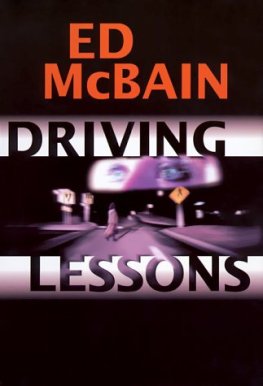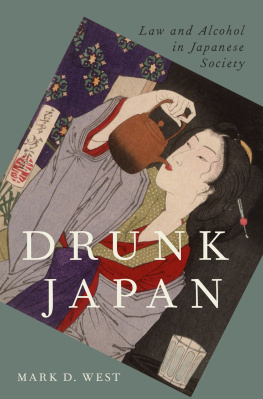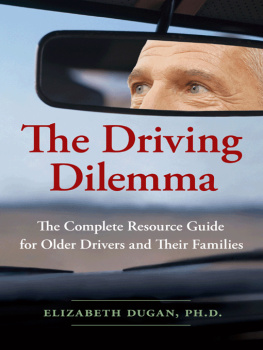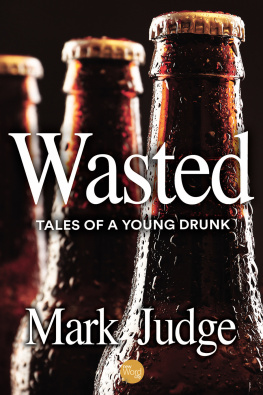The University of Chicago Press, Chicago 60637
The University of Chicago Press, Ltd., London
1989 by The University of Chicago
All rights reserved. Published 1989
Printed in the United States of America
98 97 96 95 94 93 92 5 4
ISBN 978-0-226-22290-5 (ebook)
Library of Congress Cataloging-in-Publication Data
Jacobs, James B.
Drunk driving : an American dilemma / James B. Jacobs ; foreword by Franklin E. Zimring.
p. cm. (Studies in crime and justice)
Bibliography: p.
Includes index.
ISBN 0-226-38979-0 (pbk.)
1. Drunk drivingUnited States. 2. Drinking and traffic accidentsUnited States. I. Title. II. Series.
HE5620.D7J29 1989
363.1 251dcl9
88-17383
CIP
Drunk Driving
An American Dilemma
James B. Jacobs
Foreword by Franklin E. Zimring
The University of Chicago Press
Chicago and London
Studies in Crime and Justice
EDITORIAL COMMITTEE
James B. Jacobs
Sanford H. Kadish
Norval Morris
Michael Tonry
Stanton Wheeler
Marvin E. Wolfgang
Franklin E. Zimring (Chairman)
This book is dedicated to the memory of Cornell sociologist
Professor Rose K. Goldsen
valued colleague, respected intellect, and dear friend
Foreword
Social control of the drinking driver, a persistently important policy issue in the United States, has been chronically understudied in the social sciences, in academic law, and in criminology. The policy significance of the problem has long been acknowledged because tens of thousands of lives lost each year in accidents and hundreds of thousands of arrests are hard even for the professoriate to ignore. But the jurisprudential and criminological issues have not been considered of sufficient intellectual status to concern those in the higher reaches of the American legal and criminological academies. Scholars from public health, alcohol studies, and sociology who were developing knowledge on this topic were regarded by many criminologists and criminal law scholars in much the same way that many regard chiropodistsas people doing useful but not very interesting work.
In the United States, no law professor in the postwar generation established a tradition of study involving drinking and driving to parallel the career of Johannes Andenaes in Norway. Meanwhile, postwar American criminology was preoccupied with theories of delinquency and with large-scale ideological battles. Even the general public paid little attention to the social cost of drunk driving in the United States during the 1960s and early 1970s, in part because of the pressures brought by sharp increases in the rates of other crimes.
Public perception of the importance of the social control of drinking drivers had changed dramatically by the late 1970s. Just as rates of street crime moderated in the United States, grassroots concern with the death toll from alcohol-related accidents increased and became a persistent presence in the media, in state and local legislative bodies, and in schools and other community institutions. And the new salience of drunk driving does not appear to be a short-lived phenomenon. Interest in control of the drinking driver has exhibited a one-directional dynamic in the past decade: new institutions and groups get involved, but there is no substantial example of levels of public concern or involvement diminishing.
Now, at last, the legal academy is catching up with its social environment. This book breaks new ground in law-related research and establishes its author as the first authentic academic legal authority on alcohol and traffic safety in the United States.
This study integrates the considerable learning currently available on both the many facets of drunk driving and the institutions that respond to the drinking driver. The range of disciplines and issues covered is largefrom psychopharmacology to criminal procedure. Mastering so substantial a literature is one of the books achievements.
And it turns out that social response to drunk driving is an absolutely fascinating case study in law and society. Much as geologists flock to live volcanoes to study the processes of land formation, the student of legal policy can examine drunk driving as an example of exceptionally fast change in the criminal law. And while many areas of vice control have become examples of decriminalization, the trend in the issue of drunk driving has been toward treating the behavior as a more serious threat and the offender as a more culpable actor. We are here witnessing the modern morality play of the process of criminalization. So this volume introduces the student of law and society to a laboratory of social and legal change that can teach much about the conditions under which such changes are likely to occur and more still about some consequences of criminalization.
This is one of two consecutive volumes in the Studies in Crime and Justice series that are devoted to the criminal law aspects of alcohol and traffic safety. The volumes are designed to complement each other. Michael Laurence, John Snortum, and I edited a volume of essays by subject-matter specialists on the wide range of areas relevant to the topic. The aim of that volume was encyclopedic; the aim of this volume is synthetic.
This is as well the second volume Jim Jacobs has contributed to the studies in Crime and Justice series. He is the fifth author to contribute more than one book to the series and is the youngest member of that distinguished bank of recidivists. It is one of the particular pleasures of this business to watch the personal development of scholars over time, as well as the accumulative impact of their scholarship in this series of books. Those of us associated with the progress of the series and the career of Jim Jacobs have reason to be doubly proud.
FRANKLIN E. ZIMRING
Acknowledgments
Over the many years that I have been laboring on this book and on several essays that have led up to it, I have been assisted immeasurably by family, colleagues, and critics. I owe debts of gratitude to two New York University faculty colleagues, Graham Hughes and Nadine Strossen. For two years Graham and I cotaught a law school seminar on drunk driving; as always, I benefitted immensely from his probing jurisprudential analyses. Nadine collaborated with me on an exhaustive legal analysis of drunk driving roadblocks. She pushed me to think much harder about this subject than I could possibly have pushed myself. I also owe a very large debt of gratitude to David Wasserman, a lawyer and fellow at our Center for Research in Crime and Justice who went over the final revisions of this book chapter by chapter and line by line. His criticisms, suggestions, and encouragement helped me immeasurably. My final revisions were also facilitated by the excellent research assistance of Julie Macht and the insightful comments of Andrew von Hirsch.
Two University of Chicago Press reviewers, Franklin Zimring and Phillip Cook, provided constructive and penetrating criticism that pushed me to my limits and beyond; they have contributed enormously to the development of this book. While this was my first experience with Professor Cooks incisive mind, I have been the beneficiary of Franklin Zimrings brilliant insights and incredibly generous assistance throughout my career, and I would like to take this opportunity to thank him publicly.
Throughout most of this project my secretary, Eileen Peters, provided the day-to-day office assistance that made it possible for me to function effectively. When she left to begin her family, Yvette Morales took over with skill and good humor. Throughout every day of this project, my wife, Jan Sweeney provided the constant support and encouragement that made it possible to complete the manuscript.










